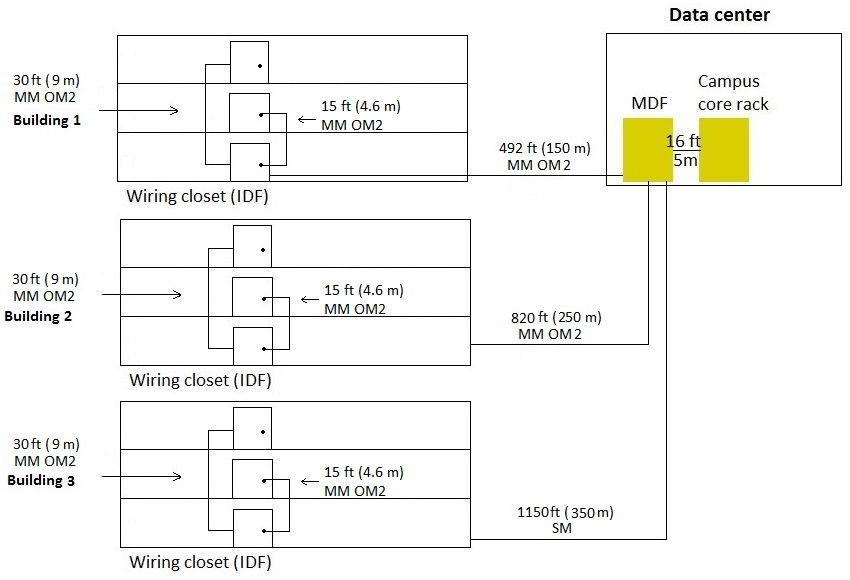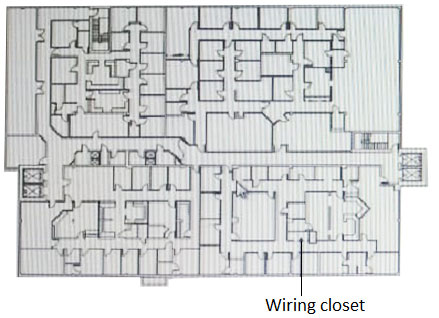Case study -
A customer needs a wireless network upgrade for 802.11ac and possibly an upgrade to the wired network. The customer requires dual-radio 802.11ac APs, each radio of which can support 4x4 MIMO at full feature set.
The customer has given architects this information about their wireless devices:
✑ 2700 IoT devices which will have only wireless connections; they support WPA2 with 802.1X
✑ 300 on each floor in 3 buildings with 3 floors each
✑ 5,400 users, who use devices such as laptops and smartphones
✑ 600 users on each floor in 3 buildings with 3 floors each
✑ 24 security cameras which will have only wireless connections; they support WPA2 with 802.1X and have a local power source
✑ 4 on floor 1 of each of the 3 buildings
✑ 2 on the other 6 floors
The architect also has collected information about the existing wired network.
The existing access layer switches support these features:
✑ 10/100/1000 edge ports
✑ PoE (802.3af)
✑ 1GbE fiber uplinks
The existing aggregation switches support these features:
✑ 1/10GbE fiber ports
✑ ARP tables up to 64,000
The customer has provided this figure that shows the existing cabling between floors and between buildings:

Each floor is about 100 feet (30 m) by 140 feet (43 m) with a 10 foot (3 m) ceiling. Interior walls are drywall. The layout for each floor is similar to that shown below.
CAT5e cable is extended to all areas.

The customer wants to have a wired upgrade as well. The customer has indicated some additional requirements for the wired network, including redundancy for all switch-to-switch links. The customer also wants to explore whether the aggregation layer in buildings can be eliminated.
What is one missing piece of information the architect should obtain from the customer before they design the solution and select new switches and their accessories?